Distal (Low) Hamstring Tendonitis
Read More >
Low hamstring tendonitis, also known as hamstring tendinopathy, is a painful condition at the back of the knee. It can make the back of the knee or top of the calf feel sore and stiff, and can limit function of the knee for activities such as walking, running and cycling. Tendonitis is commonly referred to as an overuse injury, as it is a state of disrepair in the tissue. It is usually caused by repeated overload to the tissue without the required time for recovery and repair. In some circumstances, it can be caused by direct trauma, or one sudden overload.
If you have had a low hamstring diagnosis, your physical therapist with discuss with you the best course of action for your injury. Here are some of the common exercises that are prescribed for rehab from a hamstring tendinopathy.
Some people will find that stretching the hamstring aggravates their symptoms. In these cases, this exercise should be avoided. However, it is no issue for others, and especially in the later stages of recovery a hamstring stretch can be really beneficial to keep the muscle long and relaxed.
Stand with your affected leg stepped forwards, and foot flat on the floor. Bend at the hip, while keeping a flat back and straight knee.
You should feel the stretch at the back of your thigh. Hold for 45 seconds, then relax.

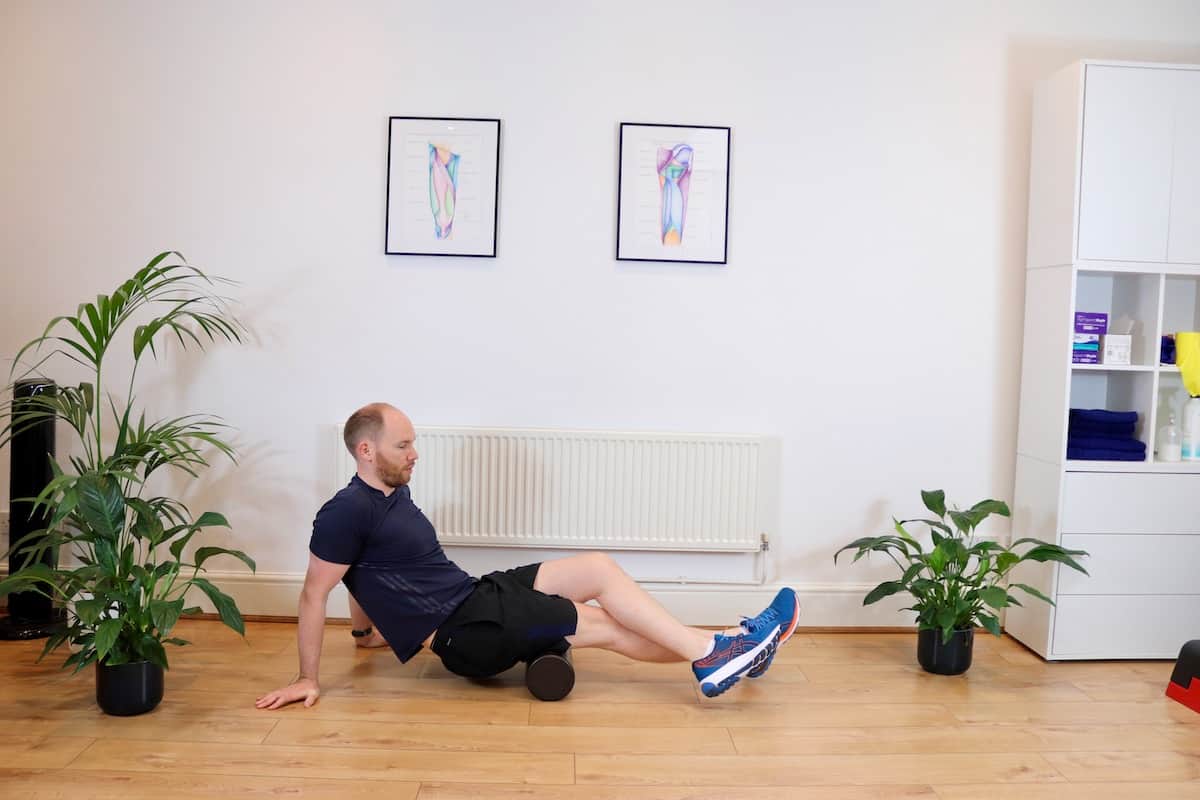
Foam rolling is a good alternative or additional way to relax and lengthen the hamstring muscle. This can reduce the pull on the tendon and help speed up recovery from tendonitis.
Sitting on the floor, place the roller under your thigh. Support your weight between the roller and your hands behind you. Very slowly roll your thigh over the roller along the middle, inside and outside of your thigh.
You should roll very slowly for 2-5 minutes, stopping at any tender points till you feel them release.
Due to the change in physiology that occurs in the tendon when it is in a tendinopathic state, loading the tissue is required for recovery. Loading the tissue stimulates protein synthesis to occur, for the tendon to get stronger and more resilient. These are exercises that work the hamstring but also work the gluteal muscles as strengthening weak glutes help to bring balance to the chain of muscles that the hamstring works in.
These exercises can be started with slow smooth movements, of 12 repetitions for 3-4 sets. Doing these on alternate days is best to allow the tissue with adequate time for recovery.
Lying on your back, with your knees bent to 90º, tilt your pelvis backwards and curl your tailbone up towards the ceiling. You should feel the back of your thighs working.
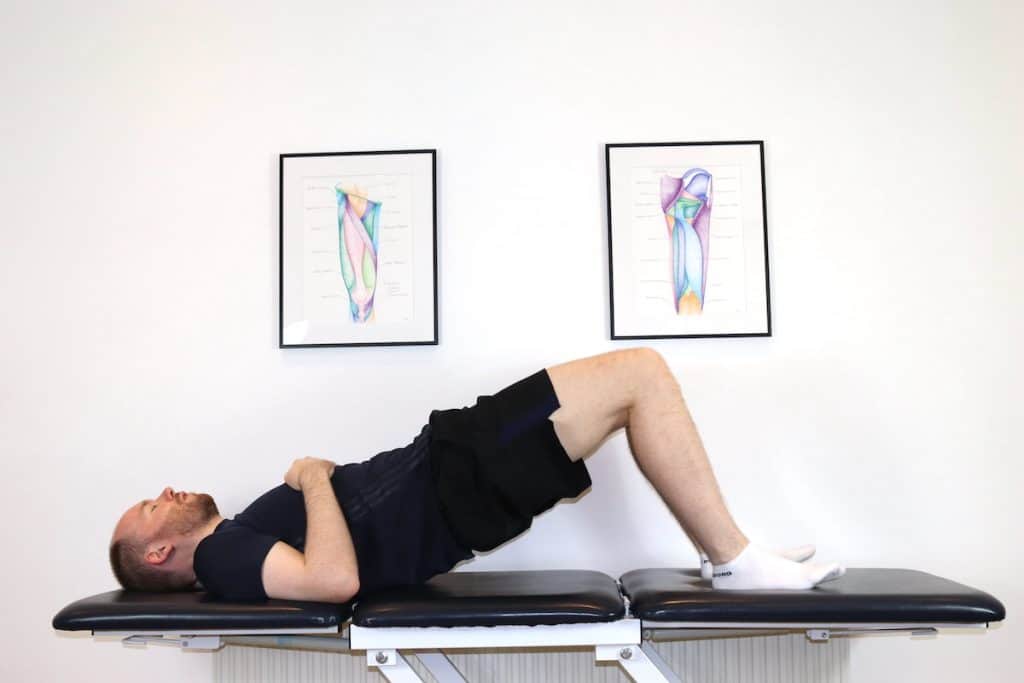
A long lever bridge is a great progression from the short lever. With your knees at a straighter angle, you will have a greater load on the hamstring with this exercise.
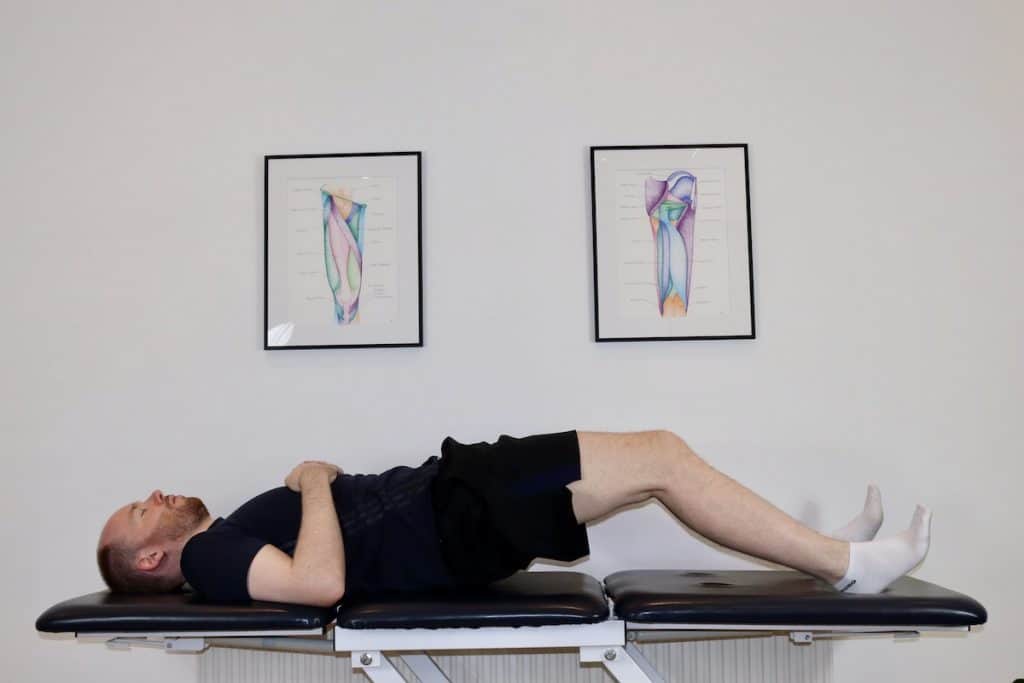
Stand with a band tied around your affected leg, at the ankle, and standing on the other end of the band with your other foot. While keeping your knees together and thighs parallel, bend your knee against the resistance band. Bend to 90º then slowly lower.
This is a great exercise to work the hamstring through a short range of movement.
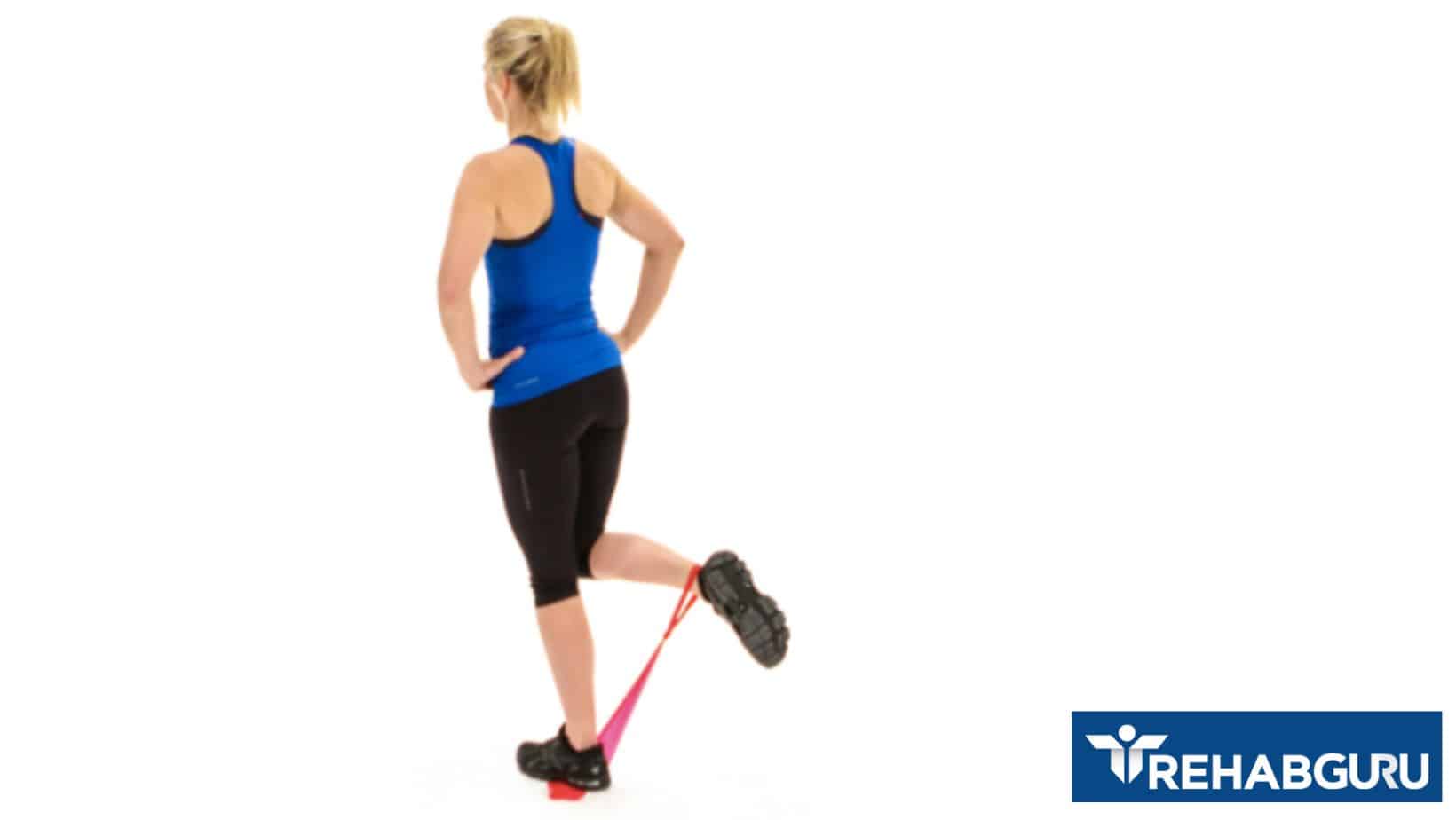
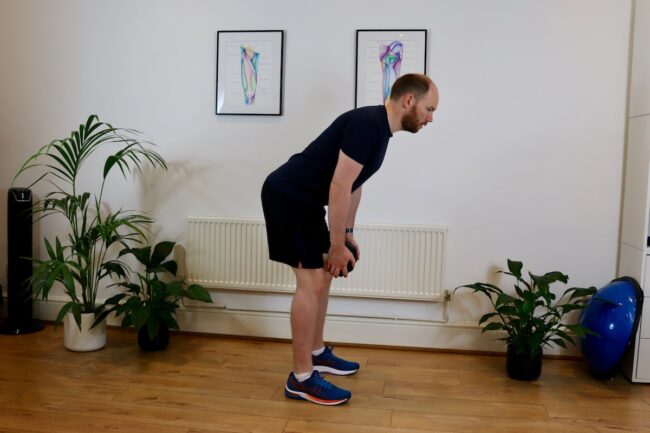
This is a great later stage exercises as the hamstring muscle and tendon is lengthened as it works. Keep your knees very slightly bent and bow forwards. Bend from your hips, keeping a straight back. Feel your glutes and hamstrings working to slowly lower you down. Squeeze your glutes and hamstrings to return up.
This is a great exercise to work the hamstring through a long range of movement, which is more challenging.
This article is written by James McCormack, a Lower Limb Specialist who is an expert in treating Knee Pain.
This is not medical advice. We recommend a consultation with a medical professional such as James McCormack if you are experiencing any of the symptoms discussed in this article. James offers Online Physiotherapy Appointments weekly and face-to-face appointments in his London clinic.